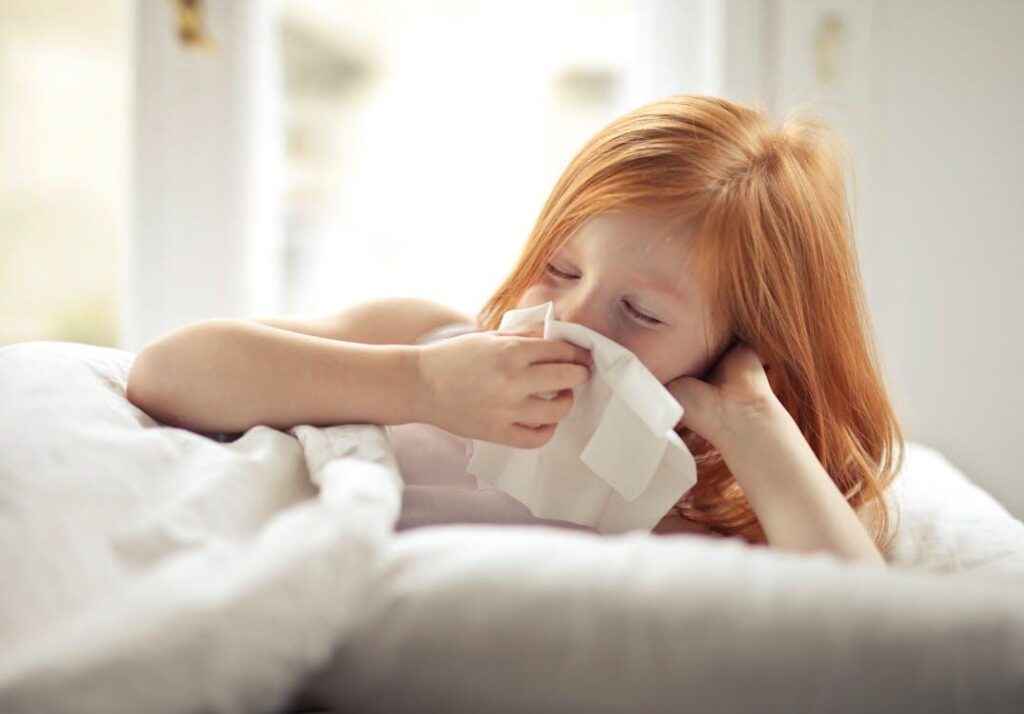Allergies are a minor bugbear for some, and a potentially fatal danger for others. Because of this, doing what you can to minimize the likelihood of allergic reactions being triggered in your own home is a priority.
Here’s what it takes to protect your family and friends from invisible irritants of all types.
Understanding Common Allergens in the Home
Allergens can lurk in unexpected places. Knowing where they hide helps you tackle them effectively, which is important if you’re one of the 33% of people who have at least one allergy. For instance:
- Dust mites thrive in bedding, carpets, and upholstered furniture.
- Pet dander floats into every corner, sticking to surfaces and clothing.
- Mold spores flourish in damp areas like bathrooms or basements.
- Pollen sneaks indoors through open windows and on clothing.
To combat these allergens:
- Vacuum regularly with a HEPA filter vacuum cleaner. This reduces dust mites and pet dander.
- Wash bedding weekly at high temperatures to kill mites.
- Keep humidity below 50% using dehumidifiers to prevent mold growth.
- Consider air purifiers for trapping airborne pollen particles.
Awareness is the first step towards a safer environment. A little knowledge goes a long way when minimizing allergies at home.
Natural Repellents to Keep Pests Away Safely
Using natural repellents provides an eco-friendly approach to pest control. For example:
- Essential oils like peppermint and lavender repel ants and mosquitoes.
- Vinegar solutions deter insects from surfaces.
- Diatomaceous earth is effective against bed bugs and cockroaches.
These natural solutions help maintain a healthy home environment. Of course, for serious infestations it’s better to get a professional exterminator involved rather than relying on home-made methods. It’s just a case of being honest about when you need expert help.

Preventive measures are also wise, so why not:
- Seal cracks and gaps in doors or windows to prevent entry.
- Use mesh screens on windows for keeping out flying insects.
- Store food in airtight containers so pests don’t have easy access.
These methods ensure safety without harsh chemicals. They create a protective barrier while promoting well-being in your home.
Identifying Child-Specific Allergy Triggers
Children’s allergies can differ significantly from adults’, and 4.1 million people visit their physician to deal with common reactions. Frequently encountered triggers to watch for at home include:
- Milk, eggs, and peanuts often cause food allergies.
- Dust mites in toys or stuffed animals are common irritants.
- Certain fabrics might trigger skin reactions.
Address these concerns by taking specific actions:
- Read labels carefully when buying packaged foods to avoid allergens.
- Regularly wash toys and bedding in hot water to eliminate dust mites.
- Choose hypoallergenic laundry detergents for washing clothes.
Creating an allergy-aware environment helps children breathe easier. Keeping an eye on potential triggers allows you to prevent unnecessary discomfort.
The Role of Pets in Household Allergies
Pets bring joy but can also trigger allergies. Understanding their impact helps manage symptoms effectively.
For instance:
- Pet dander accumulates on floors and furniture, causing reactions.
- Saliva from grooming transfers allergens to fur.
- Outdoor pets might carry pollen indoors on their coats.
To minimize allergic reactions, try the following strategies:
- Regularly groom pets to reduce loose hair and dander.
- Use HEPA filters in your home’s HVAC system for cleaner air, and change them regularly.
- Keep designated pet-free zones like bedrooms to limit exposure.
Balancing pet ownership with allergy management is achievable. Taking preventive measures allows everyone in the home to enjoy furry companions comfortably.
Practical Steps to Reduce Dust Mites
We’ve touched on a few ways to deal with dust mites, and you’ll need a combo of consistent efforts and targeted solutions. Additional strategies include:

- Using allergen-proof mattress and pillow covers to block mites.
- Opting for washable rugs instead of wall-to-wall carpeting, making cleaning easier.
- Replacing heavy drapes with lighter curtains that you can wash frequently.
It’s also worth incorporating these practices enhances protection against dust mite allergies:
- Maintain a clutter-free environment to limit places where mites can hide.
- Sun-dry bedding and pillows when possible as sunlight kills dust mites naturally.
- Choose leather or vinyl furniture, which does not harbor allergens like fabric-covered pieces.
Taking these steps means you’ll further reduce the presence of dust mites in your home. These proactive measures provide a healthier living space without relying on repetitive tactics.
The Bottom Line
You can’t completely rule out the possibility of allergens entering your home. However, if you’re proactive about keeping them at bay, the results will be enjoyed by the whole family.

